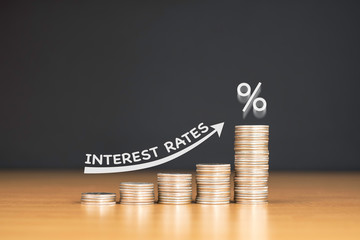
What Is An Interest Rate?
If you’ve ever wondered what an interest rate is, you’re not alone. While interest rates are essential to our financial system, they can also confuse the average consumer. Aside from being a vital part of the financial system, interest rates also help us save money on our purchases. Here’s a primer on interest rates, including their types and work. If you don’t understand interest rates, you may find it challenging to save money. Search for Moneylion Legit to learn more about the interest rate.
 An interest rate is a percentage that a lender charges a borrower for using money. The amount will vary from one loan to another, but generally speaking, an interest rate is a cost of borrowing money from a lender. The lender expects to be compensated for the money they lose during the life of the loan. The interest is due for each period that the loan is active. Interest rates are not limited to loans and savings accounts.
An interest rate is a percentage that a lender charges a borrower for using money. The amount will vary from one loan to another, but generally speaking, an interest rate is a cost of borrowing money from a lender. The lender expects to be compensated for the money they lose during the life of the loan. The interest is due for each period that the loan is active. Interest rates are not limited to loans and savings accounts.
An interest rate is a fee that a lender charges for using a borrower’s money. Often shown as a percentage of the loan’s principal, the interest rate is borrowing money. It works in both directions; the lender benefits by having a more significant profit by charging higher interest rates. In addition to being important to the borrower, the interest rate is the amount you pay for the loan.
An interest rate on consumer loans is expressed as an annual percentage rate (APR) and can apply to all kinds of debt. Credit card interest, for example, is expressed as a percent of the total loan amount. However, an annual percentage rate (APR) is more accurate as it accounts for compounding. A percentage yield is an interest rate that a bank or financial institution pays a borrower. When you compare interest rates on CDs and savings accounts, you can see how this percentage corresponds to the actual rate.
In addition to savings accounts, loans and credit cards all have interest rates. While these rates are essential to the banks, knowing what they’re doing is also important. The prime rate is a crucial reference point for interest rates and often shifts. This is because the prime rate is the benchmark for some types of credit cards and loans. It is best to compare interest rates from different lenders before committing to any loan.
The APR is usually higher than the interest rate, but it offers a comprehensive picture of the cost of borrowing money each year. It includes origination and one-time fees and the principal and interest payments. It’s best to compare APRs when comparing loans from different lenders. It will give you a more accurate picture of how much interest you’ll pay on loan over the life of the loan.
Interest rates can come in two primary forms: real interest and nominal interest. A nominal interest rate refers to the amount of money owed minus inflation and is often used with the real interest rate. Inflation affects the interest rate, so the real interest rate is a better measure of the actual value of money borrowed than the nominal interest rate. Similarly, actual interest rates take inflation into account and are often used in credit cards and loans.
A higher interest rate is necessary to compensate the lenders for decreasing purchasing power. In other words, if the federal funds rate rises, the interest rate will increase as well. While a lower interest rate is better for a healthy economy, a higher interest rate may be more costly in a recession. A lower interest rate means more money in circulation, which is good for the economy.
Another term for interest rates is APR. An APR is a calculation that considers the fees and interest you’ll pay every year. It gives you a better idea of how much you’ll be paying for a loan and how much money you will have to pay each month. You can use the APR to decide which one offers the lowest interest rate by comparing different loans. By comparing interest rates, you can find the best option for your needs and budget.
